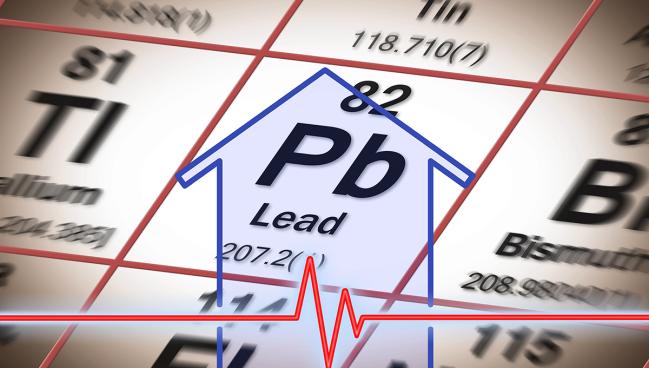Exposure to Lead Linked to Risk of CVD Mortality: Strong Heart Study
The study again exposes the environmental hazards of toxic metals, a risk that disproportionately impacts American Indians.

A new study, this one in a cohort of American Indians, is once again highlighting the cardiovascular risks associated with environmental exposure to heavy metals and the lack of options for treatment.
In the prospective Strong Heart Study, higher levels of epigenetic biomarkers of lead, derived from genome-wide DNA methylation (DNAm) data, reflecting cumulative exposure, were associated with a significantly higher risk of cardiovascular mortality.
“We know that lead is associated with a variety of adverse health outcomes, including cardiovascular disease,” Wil Lieberman-Cribbin, MPH (Columbia University Mailman School of Public Health, New York, NY), told TCTMD. “For this paper, we were trying to assess that risk in an American Indian population, because it’s a population that’s been understudied. Given the relevance of lead exposure, both nationally and specifically within American Indian communities, we wanted to discern a way to assess the risk of lead exposure with cardiovascular disease.”
Using blood DNAm-based biomarkers “we were able to capture some risk from lead with cardiovascular disease mortality in this way,” he added.
The impact of lead on CVD mortality was modified by sex, however, with investigators reporting that a positive association was observed in men, but not in women. The lack of association with lead exposure and CVD mortality in women is likely because the epigenetic biomarkers were developed in the Normative Aging Study, an all-male population, say researchers. Given that, “we were not surprised to see that the associations were a little stronger in men compared with women,” said Lieberman-Cribbin.
Senior researcher Allison Kupsco, PhD (Columbia University Mailman School of Public Health), said there has been evidence of a CVD effect modified by sex in other studies that have measured lead directly, but “in this particular case, since we don’t know how well the biomarkers actually perform in women, it’s entirely possible the association and predictive ability of the biomarker in women is just not as strong.”
We were able to capture some risk from lead with cardiovascular disease mortality in this way. Wil Lieberman-Cribbin
Kupsco said their findings should not be interpreted to mean that lead is more harmful to men than women.
Gervasio Lamas, MD (Mount Sinai Medical Center, Miami, FL), who was not involved in the study, believes that the “burden of proof” for considering toxic metals, not just lead but others like cadmium, as cardiovascular risk factors has been met. While cardiologists focus on traditional risk factors, there is a failure to recognize the toll of environmental pollutants on cardiovascular disease.
“Lipid-lowering drugs have been out there forever, and we’re still doing 50 cases in the cath lab each day,” he told TCTMD. “There are few cardiologists who recognize that airborne and ingested pollutants, in particular toxic heavy metals, like lead, are cardiovascular risk factors. . . Public health experts and epidemiologists, they’ve known for a long time that lead, cadmium, and arsenic are associated with cardiovascular disease, both coronary disease, stroke, and peripheral artery disease. It’s not mysterious to them.”
In 2018, researchers published data from the National Health and Nutrition Examination Survey (NHANES) and concluded that “low-level environmental lead exposure is an important, but largely overlooked, risk factor for cardiovascular disease mortality in the USA.” In that analysis, which was published in Lancet Public Health, it was estimated that lead exposure may contribute to more than 250,000 excess cardiovascular deaths each year.
The results of that study, said Lamas, “were chilling,” yet the findings barely made a dent in public consciousness.
Understudied American Indian Population
The Strong Heart Study (SHS) is a prospective study of CVD in American Indian adults from the Southwest and Great Plains. As the researchers point out, lead exposure has been documented in American Indian communities. In 2020, the American Heart Association (AHA) issued a scientific statement on the cardiovascular health of American Indians and Alaska Natives noting, among other things, that these communities have been disproportionately affected by environmental chemicals. Exposure to toxic metals, according to the AHA, has been a contributing factor to higher rates of CVD in this population. In fact, previous analyses from the SHS have shown that long-term exposure to arsenic and cadmium was associated with a higher incidence of coronary heart disease and stroke.
Lead accumulates in bone and has a half-life that is decades-long, so measurements can be used to assess cumulative exposure. However, obtaining bone lead measurements isn’t easy because it requires X-ray fluorescence technology that exposes patients to radiation and isn’t widely available. As Lieberman-Cribbin pointed out, lead levels are not traditionally measured in cohorts of patients enrolled in CVD studies.
Recently, researchers developed a way to assess lead exposure using DNA methylation-based biomarkers. With environmental exposure to lead, there are alterations in whole blood DNA methylation and these changes have been correlated with lead concentrations in bone. These biomarkers are “epigenetic signatures” that can estimate concentrations of lead in the blood, tibia, and patella, say researchers.
What we were able to do was leverage the patterns of epigenetic marks across our DNA to predict our past exposures. Allison Kupsco
To TCTMD, Kupsco explained that the epigenome is responsive to the environment, yet stable at the same time.
“When we are exposed to some sort of environmental stimuli, whether it’s lead or cigarette smoking, or even something more related to disease pathogenesis like cancer, it can lead to changes in the epigenome,” she said. “Even after the exposure is removed or ameliorated in some way, the changes in the epigenome can still be present. What we were able to do was leverage the patterns of epigenetic marks across our DNA to predict our past exposures. . . . This gives us the ability to address questions about lead without exactly directly measuring it in the population.”
In the current American Indian cohort, researchers found median concentrations of lead epigenetic biomarkers in of 13.8, 21.3, and 2.9 μg/dL in tibia, patella, and blood, respectively.
Doubling of the amount of the DNA methylation-based biomarker of lead in tibia and blood was associated with 42% and 57% higher relative risks of CVD mortality, respectively, whereas analyses for the patella samples showed similar, but not statistically significant, trends.
In a model stratifying the biomarkers by tertiles, those with highest blood levels had a significantly higher risk of CVD mortality compared with the lowest tertile (HR 1.28; 95% CI 1.00-1.64), but there were only trends toward higher CVD mortality in a similar tertile-based analysis with the tibia and patella biomarkers. None of the epigenetic biomarkers were associated with CVD incidence.
‘Chilling’ Results
Lieberman-Cribbin said there are racial and socioeconomic disparities when it comes to lead exposure, which the recent water crisis in Mississippi, as well as the earlier one in Flint, Michigan, exposed.
“Every year, there’s a new crisis with lead and drinking water,” he said. “There certainly needs to be remediation and work done to remove lead from these communities, especially as we put out evidence showing that it influences health in such a variety of ways, even with CVD mortality.”
Kupsco said the Strong Heart Study has previously exposed the dangers of other metals, but the hazards of lead are becoming better understood. “In the past, because we weren’t able to quantify lead measures in the population compared with other metals of concern, there hasn’t been as much work done on lead,” she said. “This is a beginning showing that this is important for this population and now we need to decide what to do about it.”
From a clinical perspective, Lamas said he recommends people reduce exposure to heavy metals, if possible, with the use of air and water filtration systems, as well as avoiding a fish-laden diet to reduce exposure to mercury. To date, no treatments for heavy metal exposures have been “accepted” by regulators or clinicians, said Lamas.
The Trial to Assess Chelation Therapy (TACT) did show that an intravenous chelation regimen—which is performed to reduce lead toxicity—modestly reduced the risk of adverse cardiovascular outcomes, mainly revascularization procedures, in stable patients with a history of MI. Based on TACT, chelation therapy was awarded a IIB (level of evidence B) recommendation in the 2014 ischemic heart disease guidelines, but not many cardiologists refer patients for chelation, said Lamas. Right now, even Lamas isn’t referring patients to chelation therapy because he’s waiting on the results of TACT2, which should be completed in 2023.
“Lead is part of our lives,” said Lamas, referring to the abundant use of lead-based paints and gasoline from the 1970s that are still part of the environment. “I think there’ll be some mitigation of lead, cadmium, and arsenic—we’ll have some public health benefit with mitigation efforts—but we’re going to need some new pharmacology that is convenient to get these toxins out of us. I think we’d see a reduction in cardiovascular disease and possibly cancer.”
Michael O’Riordan is the Managing Editor for TCTMD. He completed his undergraduate degrees at Queen’s University in Kingston, ON, and…
Read Full BioSources
Lieberman-Cribbin W, Domingo-Relloso A, Navas-Acien A, et al. Epigenetic biomarkers of lead exposure and cardiovascular disease: prospective evidence in the Strong Heart Study. J Am Heart Assoc. 2022;11:e026934.
Disclosures
- The authors report relevant no conflicts of interest.





Ayhan Olcay